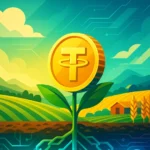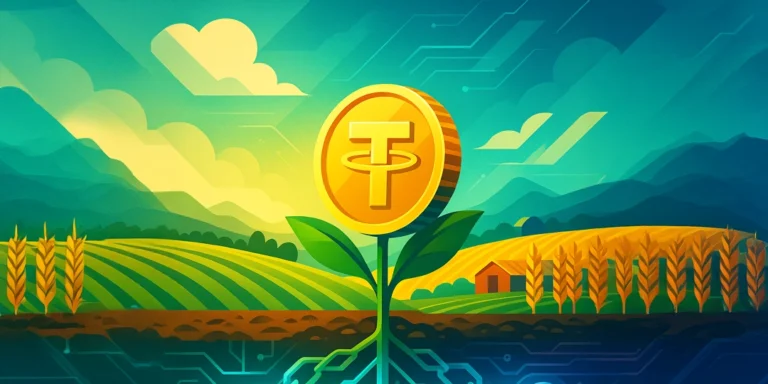Crypto powerhouse Tether, the world’s largest digital assets company, is making a strategic play for the multi-trillion-dollar global commodities trade through its recent acquisition of a South American agricultural firm.
Tether aims to embed its stablecoin, a digital currency pegged to the U.S. dollar, into the core of raw materials markets. This move promises to slash cross-border payment costs and times from days to mere seconds.
In April, New York-listed Adecoagro, a company producing dairy in Argentina, rice in Uruguay, and sugar and ethanol in Brazil, agreed to sell 70% of its shares to Tether in a deal valued at about $600 million.
This acquisition signals the rapidly expanding crypto industry’s pivot toward tangible assets and traditional “brick-and-mortar” businesses.
“The crypto industry is increasingly focused on bridging digital finance with tangible assets,” said Joe Sticco, CEO of Cryptex Finance, a company that creates indexes mirroring cryptocurrency market caps. He added that by acquiring income-generating assets like farmland or food processing plants, Tether could strengthen its balance sheet and hedge against inflation.
Tether’s primary business is USDT, a digital currency mostly backed by U.S. Treasuries. Launched in 2014, USDT has seen sharp growth in trading volumes due to rising interest in cryptocurrencies and token prices. It offers a way to facilitate payments outside the traditional global financial system. Unlike Bitcoin or Ethereum, USDT is designed to track the U.S. dollar, the dominant currency in global trade.
Commodities trading focus
Tether has issued $143 billion in USDT so far and reported $149 billion in reserves, including $120 billion in U.S. Treasuries, in its first-quarter report.
“Tether wants to boost the use of its stablecoin for cross-border payments, something I think will grow significantly in financial markets, particularly in commodities,” said Marcos Viriato, CEO of Parfin, a South American company providing cryptocurrency transaction technology.
“If a company in Brazil sells commodities to someone in Bolivia, the conventional payment process could take over three days. With USDT, it would take seconds,” he explained, noting that operational costs would also be much lower.
Parfin is running a pilot project with Brazil’s third-largest bank, Banco Bradesco. In this project, Brazilian commodity exporters sell products to international clients who pay with stablecoins. Bradesco then uses Parfin’s infrastructure to convert the USDT into local currency, which is deposited into the exporters’ accounts.
“Tether’s investment approach prioritizes companies that expand our distribution network and enhance the real-world utility of stablecoins, with Adecoagro as a prime example,” Tether stated in response to a Reuters inquiry about the deal.
The company is currently evaluating with Adecoagro’s management and other industry experts how stablecoins could enhance efficiency and liquidity in commodity trading.
Late last year, Tether reported financing a physical crude oil deal between a major oil company and a commodities trader, settled entirely in USDT. This marked the first such deal. Reuters also reported earlier this year that Russia was using cryptocurrencies in its oil trade with China and India to circumvent Western sanctions, and Venezuela has similarly explored using digital currencies for trade.
Tokenization and bitcoin mining
Another potential application for Tether in the agricultural sector is the “tokenization of commodities”, according to Gracy Chen, CEO of crypto exchange Bitget.
Tether already offers a gold token, which mirrors gold’s value and is backed by gold reserves. Chen suggested that Tether could now explore creating a sugar or corn token, which could be used for hedging or as collateral in pre-harvest financing.
“In effect, they are turning farmland, sugar mills, and renewable energy plants into programmable financial instruments,” she said.
Tether confirmed it sees “significant potential in exploring the tokenization of real-world assets, including agricultural commodities,” but stressed there are no immediate plans to launch a sugar or corn token.
Instead, for now, Tether plans to leverage Adecoagro’s renewable energy production, such as electricity from sugarcane mills, to power ‘bitcoin mining operations’ in South America.











